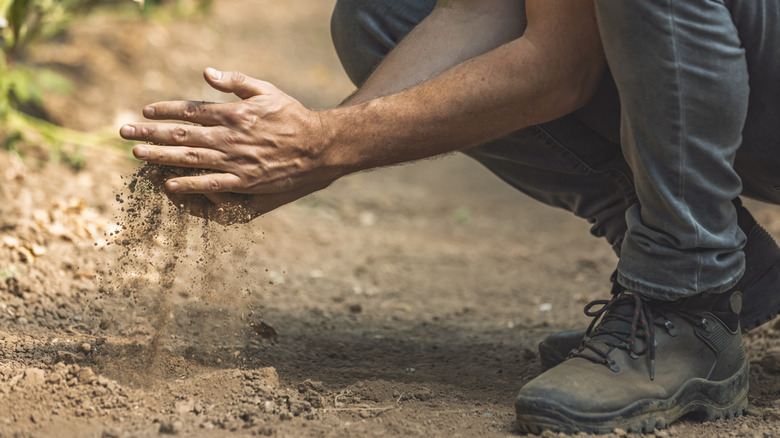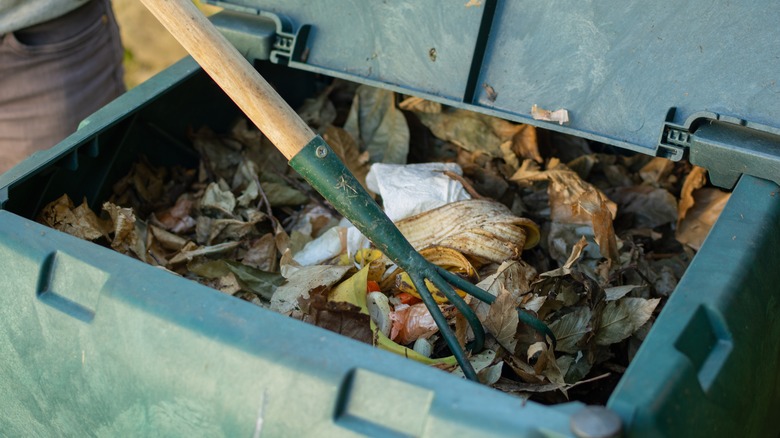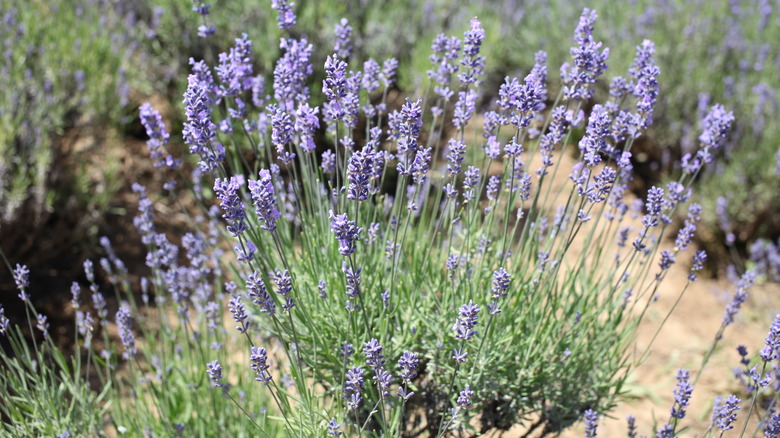Add These Amendments To Sandy Soil To Grow More Vibrant Plants
If your garden plants aren't performing as well as you hoped, the problem could lie, quite literally, in the soil. If the soil in your yard is sandy, your plants are likely suffering from a growing medium that drains too quickly and lacks nutrients. This happens because sand particles are large and coarse, creating air pockets between them where water drains freely. Nutrients tend to be carried away from the soil with the draining water, leaving the sandy soil infertile and dry. Important microorganisms thrive in moist environments, so they are also lacking in sandy soil, leading to further growing issues for many plants.
The good news is that sandy soil is easy to amend, so you can have vibrant plants blooming in a relatively short space of time. The easiest way to improve sandy soil for gardening is to mix some organic matter into the top layer of the soil. While you wait for the amendments to transform the quality of your soil, you can focus on growing plants that thrive in sandy soil, such as lavender and thyme.
Use compost and manure to improve the quality of sandy soils
Organic matter is the recommended material to improve the quality of sandy soils, which is defined as materials that are derived from formerly living sources. Examples include wood chips, compost, manure, and straw. Your aim when improving this soil type is to improve its moisture retention and nutrient retention qualities. Colorado State University recommends thoroughly decomposed organic matter such as aged manures and composts, while North Carolina State University regards compost as the best source for improving sandy soils.
You can buy compost or make it at home with leftover food scraps. One of the biggest benefits of composting at home is a free, ongoing supply of organic material you can utilize in the garden. To apply compost or aged manure to your sandy soil, add around 3 to 4 inches of the organic matter over the top of your existing soil and then work it in as much as you can with a tiller. It is best to do this before settling new plants so the roots can benefit. Repeat this process annually to ensure the once-sandy soil retains its new qualities. Consistent watering will also help the process as this will carry the compost to the lower layers of the soil. One thing you should never add to sandy soils is clay. When clay and sand are combined in the wrong quantity it can result in a material similar to concrete, which certainly won't benefit your plants.
Grow low-maintenance plants while sandy soil improves
You can expect several seasons to pass before you notice any obvious improvement in your soil, but if you're feeling impatient there are plenty of plants that thrive in sandy soil which you can grow in the meantime. Mediterranean herbs like lavender and thyme are native to poor, sandy soils, so they thrive when kept in similar conditions. They are also accustomed to growing with very little moisture, so sandy soil that drains quickly won't prove to be an issue for these herbs. If producing a lush lawn is your problem, try out one of the grasses that love life in well-draining, sandy soil, such as bahiagrass (Paspalum notatum) or bermudagrass (Cynodon dactylon).
Root vegetables also perform well in dry, sandy soils. They grow downwards to find additional sources of moisture, resulting in large veggies at harvest time. Root vegetables you should try in sandy soils include carrots and parsnips. When fertilizing your plants, do so little and often to give the roots ample opportunity to soak up the nutrients. Irrigating in the same way will also help plants growing in sandy soils to get the moisture they need.


